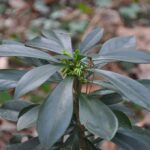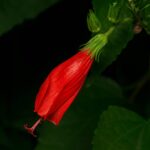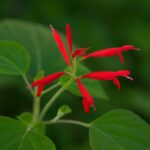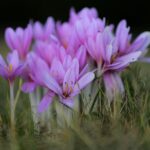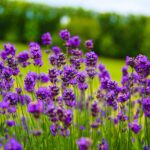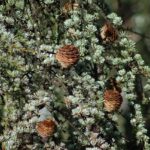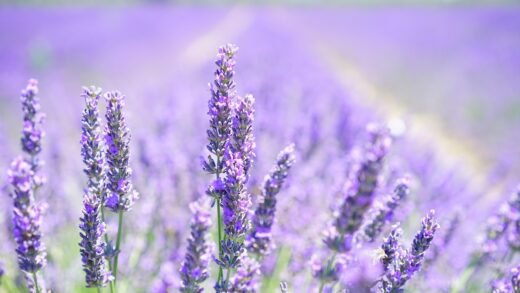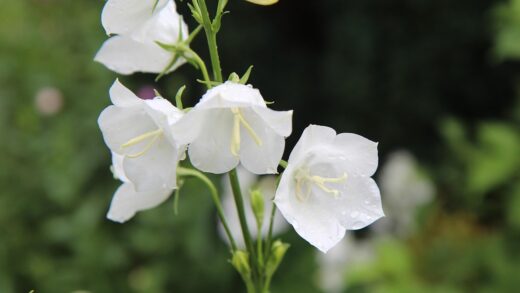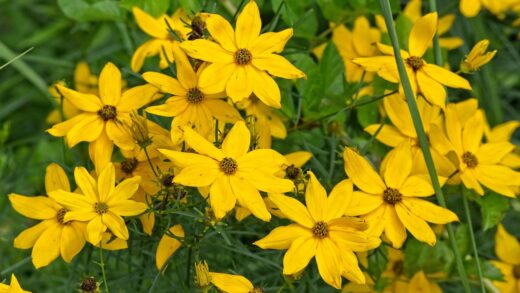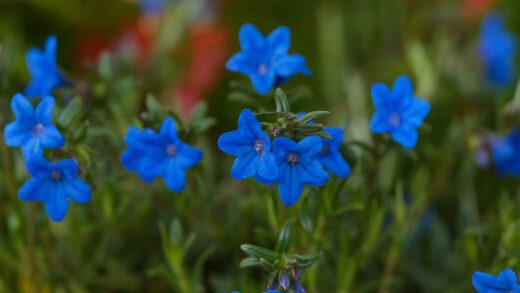Understanding the profound thirst of the Japanese banana is fundamental to its successful cultivation, as water is the lifeblood that fuels its astonishingly rapid growth. The enormous, paddle-like leaves are not just for show; they are vast surfaces for transpiration, meaning the plant releases a significant amount of water into the atmosphere, especially on warm, sunny days. Consequently, providing adequate and consistent moisture is not merely a suggestion but an absolute requirement for maintaining a healthy, vibrant, and lush specimen. Mastering the art of irrigation for this plant involves learning to read its signals, understanding the influence of its environment, and establishing a routine that delivers the right amount of water at the right time, directly where it’s needed most.
The physiology of water use in Musa basjoo
The Japanese banana’s demand for water is deeply rooted in its biological structure and function. Its massive leaves, which can each reach up to two meters in length, create an enormous surface area. This is a double-edged sword; while it allows the plant to capture vast amounts of solar energy for photosynthesis, it also leads to a very high rate of transpiration. Transpiration is the process where water is pulled up from the roots, through the pseudostem, and evaporates from the leaf surfaces, a process essential for cooling the plant and transporting nutrients. On a hot, sunny, or windy day, a large Musa basjoo can transpire several liters of water, which must be constantly replenished from the soil.
The plant’s “trunk” is not a woody stem but a pseudostem, composed of the tightly wrapped bases of the leaves. This structure is largely made up of water, acting as an internal reservoir and a hydraulic system that supports the heavy foliage. When the water supply from the roots cannot keep up with the rate of loss from the leaves, the water pressure within the cells of the pseudostem and leaves drops. This loss of turgor pressure is what causes the classic signs of underwatering: the leaves will begin to droop and sag, and in severe cases, the entire pseudostem may begin to lean.
The root system of the Japanese banana is relatively shallow but spreads widely, consisting of a fleshy, succulent corm and numerous fibrous roots. These roots are highly efficient at absorbing water and nutrients but are also very sensitive to their environment. They require a constantly moist substrate to function properly, but they also need oxygen. This is why well-draining soil is so crucial. If the soil becomes waterlogged, the air spaces fill with water, depriving the roots of oxygen and creating an anaerobic environment that can quickly lead to suffocation and the onset of root rot, a condition that is often fatal.
Therefore, the ideal watering strategy aims to maintain a delicate balance: the soil must be kept consistently and evenly moist to meet the plant’s high transpiration demands, but it must never be allowed to become saturated and stagnant. This means applying water deeply enough to moisten the entire root zone, and then allowing the very top layer of soil to dry slightly before watering again. This cycle ensures the roots have access to both the water and the oxygen they need to support the plant’s spectacular growth.
More articles on this topic
Establishing an effective watering routine
Developing a consistent and effective watering routine is essential, especially during the peak growing season from late spring through summer. For a Japanese banana planted in the ground, a deep and thorough soaking once every two to three days is a good starting point during warm, dry weather. The goal is to deliver enough water to penetrate deep into the soil, encouraging the roots to grow downwards in search of moisture, which makes the plant more resilient during dry spells. A shallow, frequent sprinkling is far less effective and can promote a weak, shallow root system.
The best way to water is to apply it slowly and directly to the soil at the base of the plant. Using a soaker hose or a gentle setting on a watering wand is ideal, as this allows the water to be absorbed into the soil with minimal runoff. This method also keeps the foliage dry, which can help to reduce the risk of fungal diseases that can proliferate on wet leaves, especially if the water is applied late in the day. Watering in the morning is generally recommended, as this provides the plant with the moisture it needs to face the heat of the day and allows any splashed foliage to dry quickly in the sun.
For Japanese bananas grown in containers, the watering demands are even higher. The limited volume of soil in a pot dries out much more quickly than garden soil, and containerized plants may need to be watered daily, or even twice a day, during the hottest part of the summer. You should always water until you see excess liquid flowing freely from the drainage holes at the bottom of the pot. This ensures that the entire root ball has been thoroughly saturated and also helps to flush out any accumulated mineral salts from the soil.
A simple, reliable method for determining when to water, for both in-ground and container plants, is the finger test. Insert your finger into the soil up to the second knuckle, near the base of the plant. If the soil feels dry at that depth, it is time to water. If it still feels moist, you can wait another day and check again. This tactile approach is far more accurate than adhering to a rigid schedule, as it allows you to adjust your watering based on the actual conditions of the soil and the prevailing weather.
More articles on this topic
Adjusting irrigation for seasons and climate
A successful gardener must be adaptable, and nowhere is this more true than in managing the water needs of a Japanese banana across different seasons and climates. During the explosive growth period of summer, the plant’s water consumption is at its absolute peak, necessitating frequent and deep irrigation. However, as autumn approaches and the days become shorter and cooler, the plant’s growth rate slows down significantly. In response, you must begin to taper off the frequency of your watering. The soil will dry out more slowly in cooler temperatures, and the plant’s reduced metabolic activity means it requires far less moisture.
The transition into winter dormancy requires a dramatic shift in your watering practices. Once the first frosts have blackened the leaves and you have cut the plant back for winter, its need for water becomes minimal. For an in-ground plant that is being overwintered outdoors under a thick layer of mulch, the natural winter precipitation is usually more than sufficient. You should not provide any supplemental water, as this can lead to the corm rotting in the cold, wet soil. The goal is to keep the dormant corm on the drier side to ensure its survival.
For plants that are being overwintered in containers in a frost-free location like a garage or basement, the watering strategy is one of minimal maintenance. You should allow the soil to dry out almost completely between waterings. Typically, a small amount of water once every four to six weeks is enough to prevent the corm from desiccating entirely. The aim is not to encourage growth but simply to keep the corm alive in a state of suspended animation until spring returns. Overwatering a dormant, containerized plant is one of the quickest ways to kill it.
In early spring, as the ground warms and new growth begins to emerge, you can gradually resume your watering routine. Start by watering moderately, as the new, small shoots do not have the large leaves that drive high water demand. As the new leaves unfurl and expand, and as temperatures steadily climb, you can incrementally increase the frequency and volume of your watering to match the plant’s accelerating growth rate. This careful attunement to the seasonal rhythm of the plant is the hallmark of expert irrigation management.
Recognizing signs of overwatering and underwatering
Learning to recognize the visual cues your Japanese banana gives you is crucial for diagnosing and correcting watering issues before they become severe. The most obvious sign of underwatering is wilting. The large leaves will begin to droop and look limp and lifeless. This is a direct result of the plant losing water through transpiration faster than its roots can absorb it. In the early stages, the plant will usually recover quickly after a deep watering. However, if the wilting is allowed to persist, the edges of the leaves will begin to turn brown and crispy, and the oldest, lowest leaves may yellow and die off completely.
Chronic underwatering will also manifest as stunted growth. The plant will produce new leaves much more slowly, and the leaves themselves will be smaller than they should be. The overall vigor of the plant will be noticeably diminished, and it will lack the lush, vibrant appearance of a well-hydrated specimen. It is important to distinguish between midday wilting on a very hot day, from which the plant may recover in the evening, and a persistent wilt that is still present in the cool of the morning, which is a clear sign that the soil is too dry.
Paradoxically, some of the signs of overwatering can mimic those of underwatering, which can be confusing for the inexperienced gardener. An overwatered plant may also have yellowing leaves, particularly the lower ones, and can exhibit a generally unhealthy, stunted appearance. The key difference is the condition of the soil. If the plant looks unwell but the soil is consistently soggy and wet, overwatering is the likely culprit. You may also notice a foul, sour smell coming from the soil, which is an indication that anaerobic bacteria have taken hold and the roots are beginning to rot.
The most definitive sign of overwatering is root rot. The base of the pseudostem may become soft and mushy, and the plant might feel unstable or wobbly in the ground. If you were to dig up the plant, you would find that the normally white, firm roots have turned brown or black, and have a slimy, mushy texture. By the time these symptoms are apparent at the soil level, the problem is often very advanced and can be difficult to reverse. This is why it is so important to ensure good drainage from the outset and to always check the soil moisture before reaching for the hose.
Advanced irrigation techniques and considerations
For the dedicated gardener looking to optimize the health and growth of their Japanese banana, there are several advanced techniques and considerations to explore. One of the most efficient methods for watering large, in-ground clumps is the use of a drip irrigation system or soaker hoses. These systems deliver water slowly and directly to the root zone, minimizing evaporation and water waste. They also help to keep the foliage dry, reducing the risk of fungal diseases. A drip system can be put on a timer to automate the watering process, ensuring the plant receives a consistent supply of moisture even when you are busy or away.
The quality of your water can also have an impact on the plant’s health over the long term, especially for container-grown plants. Tap water in many areas is treated with chlorine and may be high in dissolved mineral salts. Over time, these salts can build up in the potting soil, potentially reaching levels that can be toxic to the plant’s roots. To mitigate this, it is important to occasionally water container plants heavily until water flushes freely from the drainage holes, which helps to leach out some of these accumulated salts. Using rainwater, if you can collect it, is an excellent alternative as it is naturally soft and free of additives.
Mulching is a simple yet incredibly effective technique that should be considered an essential part of your irrigation strategy. Applying a thick layer, about 5-10 cm deep, of organic mulch such as bark chips, straw, or compost around the base of the plant serves multiple purposes. It insulates the soil, keeping the roots cooler in the summer and warmer in the winter. Most importantly, it significantly reduces the rate of water evaporation from the soil surface, meaning you will need to water less frequently, and the soil will retain its moisture for longer periods between waterings.
Finally, consider the concept of creating a microclimate that naturally conserves moisture. Grouping your Japanese banana with other lush, leafy plants can help to raise the local humidity level around them. As each plant transpires, it releases water vapor into the air, and collectively, this can create a more humid and sheltered environment. This reduces the overall rate of transpiration from each individual plant, lessening the water demand and creating a more resilient and self-sustaining planting arrangement that mimics the conditions of a natural tropical understory.







